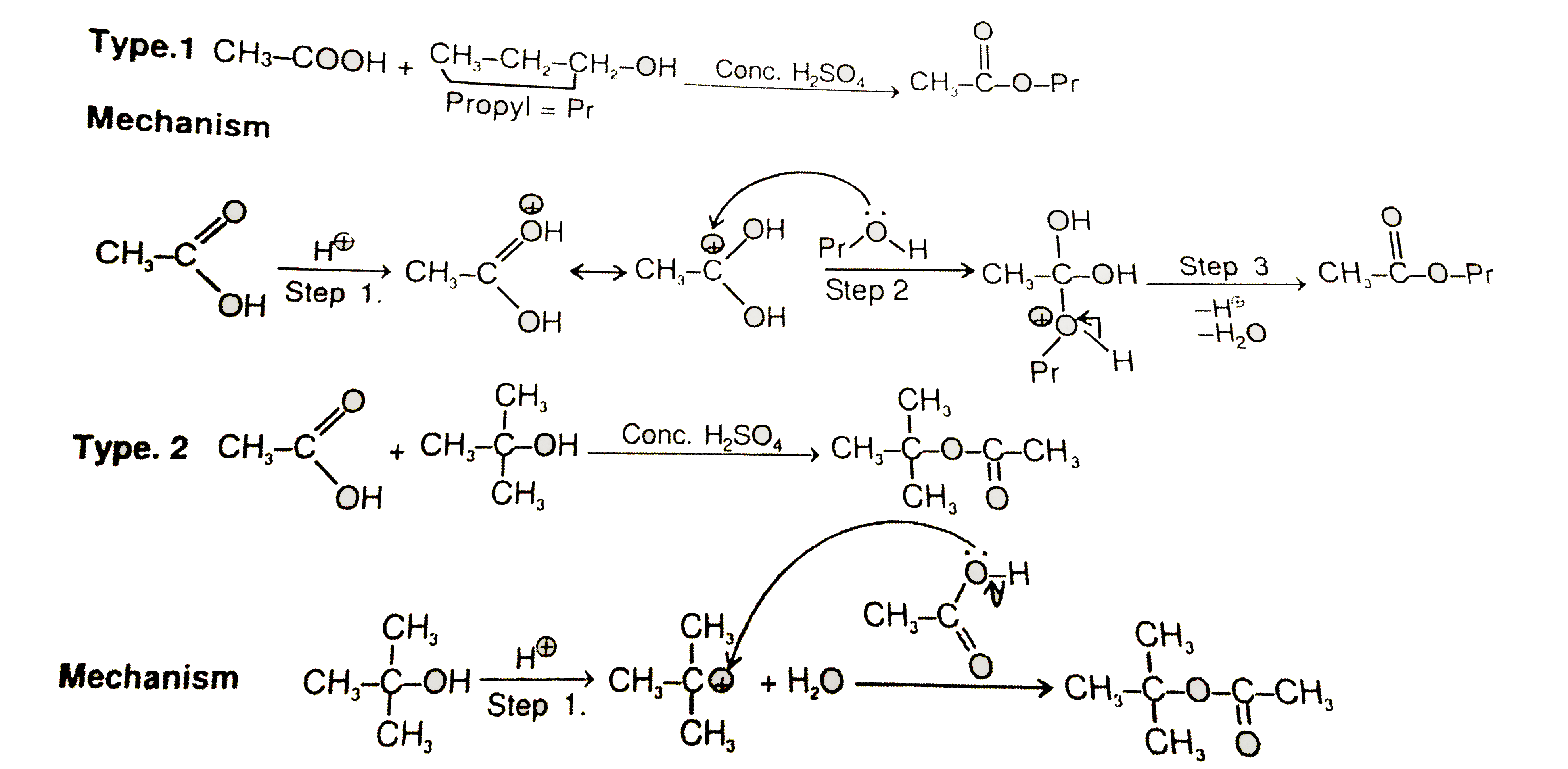Reactant H3O+−−−→CH3COOH+HCl
The correct Answer is:CH3COCl
To solve the question regarding the reactant that undergoes hydrolysis to yield acetic acid (CH₃COOH) and hydrochloric acid (HCl), we can follow these steps:
1. Identify the Products: The products given are acetic acid (CH₃COOH) and hydrochloric acid (HCl).
2. Determine the Structure of the Reactant: Since acetic acid has two carbon atoms, the reactant must also have two carbon atoms. The presence of HCl as a product suggests that the reactant is likely an acid chloride.
3. Propose the Reactant: The most plausible reactant that fits this description is acetyl chloride, which has the formula CH₃C(=O)Cl. This compound is an acid chloride and contains two carbon atoms.
4. Write the Hydrolysis Reaction: The hydrolysis of acetyl chloride can be represented as:
CH3C(=O)Cl+H2OH3O+−−−→CH3COOH+HCl
5. Mechanism of Hydrolysis:
- Step 1: The water molecule attacks the carbonyl carbon of acetyl chloride, leading to the formation of a tetrahedral intermediate.
- Step 2: The chloride ion (Cl⁻) is expelled, resulting in the formation of acetic acid (CH₃COOH).
- Step 3: The proton (H⁺) from the water molecule combines with the chloride ion to form HCl.
6. Final Confirmation: The final products of this reaction are indeed acetic acid and hydrochloric acid, confirming that the reactant is correctly identified as acetyl chloride.
Final Answer:
The reactant that undergoes hydrolysis to form CH₃COOH and HCl is acetyl chloride (CH₃C(=O)Cl).
---
CH3C(=O)Cl+H2OH3O+−−−→CH3COOH+HCl
- Step 1: The water molecule attacks the carbonyl carbon of acetyl chloride, leading to the formation of a tetrahedral intermediate.
- Step 2: The chloride ion (Cl⁻) is expelled, resulting in the formation of acetic acid (CH₃COOH).
- Step 3: The proton (H⁺) from the water molecule combines with the chloride ion to form HCl.
The reactant that undergoes hydrolysis to form CH₃COOH and HCl is acetyl chloride (CH₃C(=O)Cl).
Topper's Solved these Questions
- REDUCTION, OXIDATION & HYDROLYSIS REACTIONSBOOK - RESONANCE ENGLISHCHAPTER - REDUCTION, OXIDATION & HYDROLYSIS REACTIONSEXERCISE - Part-II Only one option correct type
26 Videos
- REDUCTION, OXIDATION & HYDROLYSIS REACTIONSBOOK - RESONANCE ENGLISHCHAPTER - REDUCTION, OXIDATION & HYDROLYSIS REACTIONSEXERCISE - Part-III Match the column
2 Videos
- REDUCTION, OXIDATION & HYDROLYSIS REACTIONSBOOK - RESONANCE ENGLISHCHAPTER - REDUCTION, OXIDATION & HYDROLYSIS REACTIONSEXERCISE - Comprehension Type
3 Videos
- PERIODIC TABLE & PERIODICITYBOOK - RESONANCE ENGLISHCHAPTER - PERIODIC TABLE & PERIODICITYEXERCISE - ORGANIC CHEMISTRY(BASIC CONCEPTS)
27 Videos
- S BLOCK ELEMENTSBOOK - RESONANCE ENGLISHCHAPTER - S BLOCK ELEMENTSEXERCISE - ORGANIC CHEMISTRY(Biomolecules & Polymer)
4 Videos
Similar Questions
Knowledge Check
Rank the transition states that occur during the following reaction steps in order of increasing stability (least → most stable) :
1. H3C−+OH2→CH+3+H2O
2. (CH3)3C−+CH2→(CH3)3C++H2O
3. (CH3)2CH−+OH2→(CH3)2CH++H2OA1<2<3B2<3<1C1<3<2D2<1<3
Which of the following is pseudo first order reaction?
I. CH3COOC2H5+H2OH+−−→CH3COOH+C2H5OH
II. C12H22O11+H2OH+−−→C6H12O6+C6H12O6
View SolutionIdentify the final product in that follow sequence of reactions.
CH2=CH2Br2−−→(X)KCN−−→(Y)H3O+−−−→(Z)
View SolutionIn the given reaction
CH2−CH2−O∣∣C−CH2COOC2H5[X]−−→(A)(i)LiAlH4−−−−−−−−→(ii)H2O/H⊕CH3−CH2−O∣∣C−CH2−CH2OH+C2H5OH
[X] will be
View SolutionObserve the esterification mechanisms for primary and teriary alcohols.

CH3−COOH+C2H518OHConc.H2SO4−−−−−−−→(P)
CH3−COOH+(CH3)3C−18OHConc.H2SO4−−−−−−−→(Q)
In the above reaction (P) and (Q) are respectively
View SolutionIn given sequence of reaction predict X
XKOH−−→H2OYAl2O3−−−→633KZ[O]−−→2 moles of CH3COOH
View SolutionWrite the product of following reactions :
(a) CH3−H3C∣C=CH3∣C−CH3O3−−−−−→Zn/H2O , (b) CH3−C≡C−CH3O3−−−−−→Zn/H2O
( c) CH3−C≡C−CH3O3/H2O2−−−−−→ , (d) CH3−CH3∣C=CH−CH3O3/H2O2−−−−−→
View SolutionWhich of the following reactions will yield propan-2-ol ? Select the right answer from (a), (b), (c) and (d)
I. CH2=CH−CH3+H2OH+−−→
II. CH3−CHOCH3MgI/H2O−−−−−−−−→
III. CH2OC2H5MgI−−−−−−−−→H2O
IV. CH2=CH−CH3Neutral KMnO4−−−−−−−−−−→
View Solution
